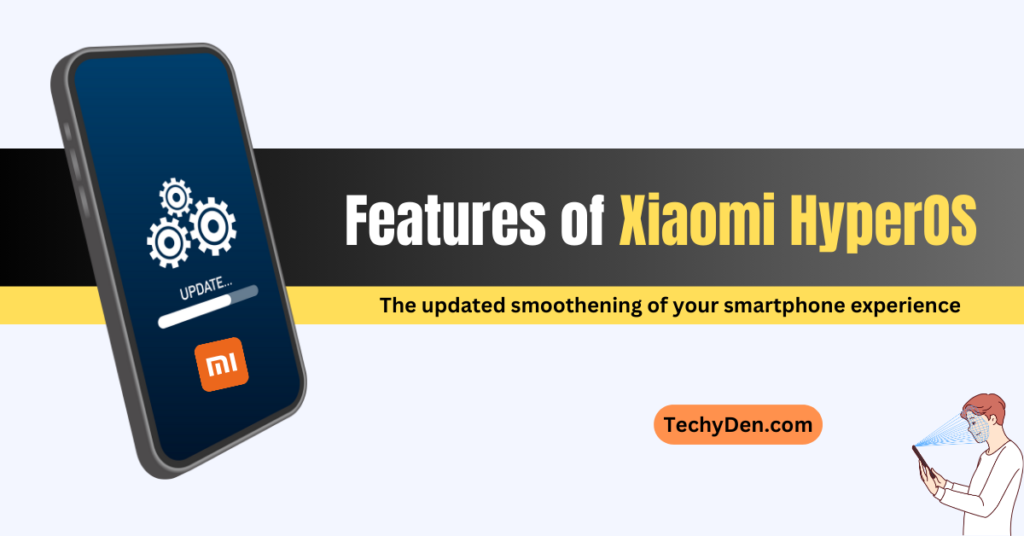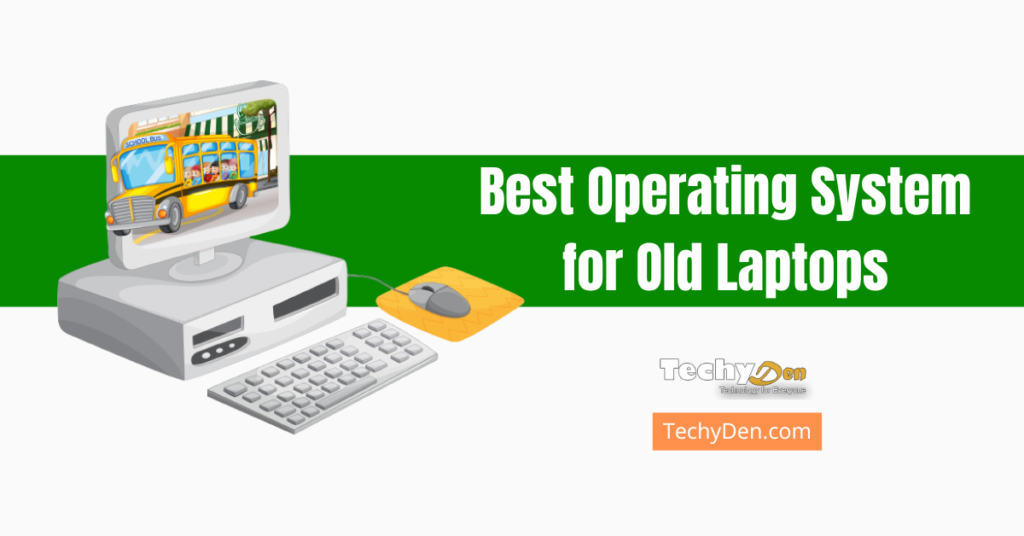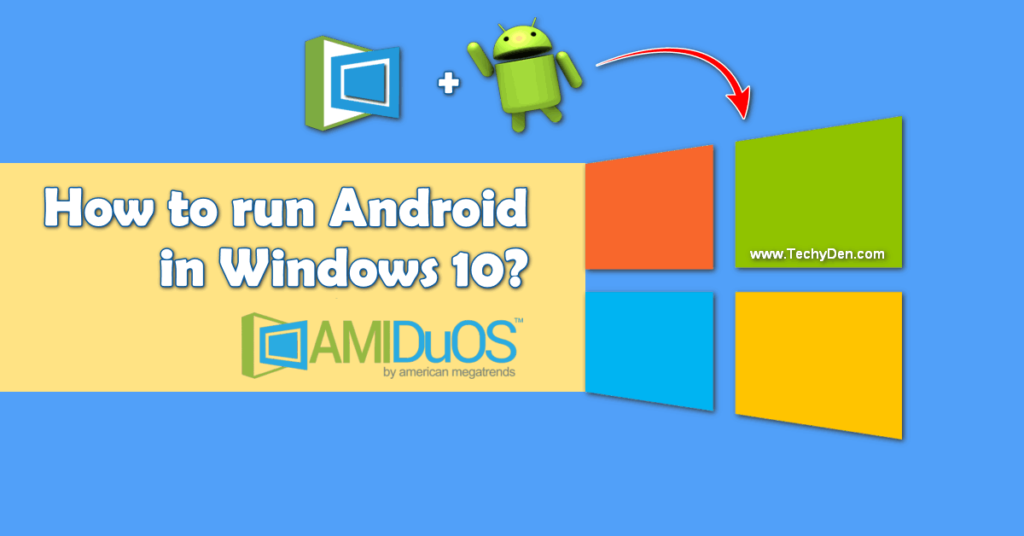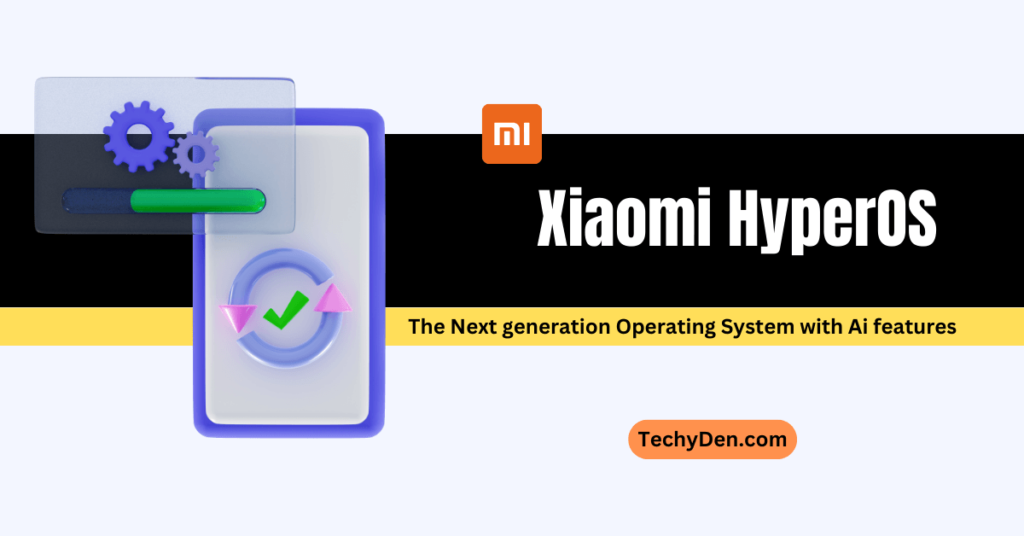Are you looking for the top and most popular mobile phone operating systems? If so, here is the list of mobile operating systems. The intelligent technology era is running out.
Our lives are controlled by technology because we all use our phones all the time to talk to people on social media and get online doctor consultations for COVID-19 treatment.
Computers have become a part of human society, and they have changed from big desktop boxes to portable laptops and smartphones.
So, smartphones have become a part of our bodies, and we cannot move without them. A booming smartphone depends on the operating system used on mobile phones.
There are more than 15 top mobile operating systems in the mobile market. Every operating system smartphone stands out in the market with its new features, which are helpful to all age groups.
Let us see more details about the operating systems for cell phones. The cell phone operating systems are also referred to as “Mobile OS,” The operating system works with smartphones, PDAs, and other mobile devices.
The modern best phone operating system combines the features of a personal computer OS with additional special features, including Wi-Fi, GPRS mobile navigation, camera feature, touch screen, speech recognition, and some other features.

Before this smartphone world, mobile phones were used to make and receive calls only and occasionally send text messages.
Modern smartphones are designed to be closer to handheld computers that help send emails, play games, watch the news and movies, help make video calls, and have many unique features.
What is an Operating system for mobile?
It is a program developed for smartphones or tablets running on mobile phones. Operating systems are used to manage a computer’s resources and memory so that it can do more than one thing at once.
When comparing user interfaces, the question “which ui is better” often arises, and the answer depends on personal preferences and specific device capabilities.
Determining the best smartphone os is a subjective matter, as users have varying priorities and requirements when it comes to mobile operating systems.
Mobile operating systems like Android and iOS have revolutionized the way we interact with our devices, offering seamless connectivity and diverse app ecosystems.
In the quest for the most powerful os, factors such as performance optimization, hardware utilization, and efficient resource management play crucial roles.
The origin os vs funtouch os debate compares two Android-based skins, each offering unique features and user experiences for Vivo and OPPO devices, respectively.
When comparing oxygen os vs funtouch os, users often consider aspects like user interface design, software updates, and overall performance.
Phone os ranking is a dynamic landscape, with various operating systems vying for top positions based on market share, user satisfaction, and innovation.
Modern smartphones are designed with particular phone operating systems with unique and advanced functions.
What is the Mobile OS market Share?
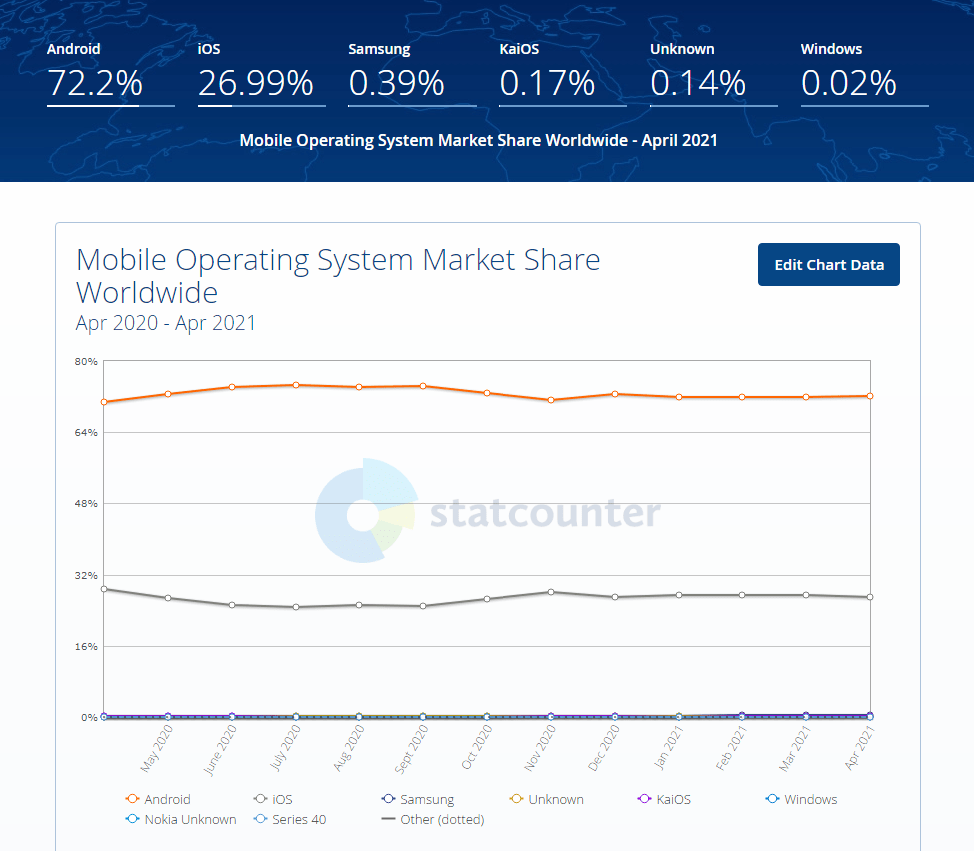
In April 2025, a few of the most popular mobile operating systems had a huge share of the market. The shares of the company are as follows: Android: 72.2%, iOA: 26.99%, Samsung: 0.39%, KaiOS: 0.17%, and Windows: 0.02%.
Based on the numbers above, Android is the best mobile operating system in the world, and it has the largest market share of any operating system. After Android, iOS comes in as the next most popular alternative to Android.
How do I know my phone operating systems?
This is so simple. If you have already bought your new smartphone, click on the name and version of the software in the settings menu.
If you buy a new smartphone, you can check the OS and performance specifications. In this post, we’ll cover the essential mobile phone OS lists.
Best operating system for mobile in 2025
Exploring the top 10 os for android mobile can help users make informed decisions and find the operating system that best suits their needs and preferences.
Determining which android os is best for mobile can be a daunting task, as it depends on factors like device compatibility, feature set, and personal usage patterns.
Most of the operating systems are open-source software. Open-source means there are no restrictions on downloading this; you can develop software or applications using this open-source code if you are a developer.
A mobile operating system (or mobile OS) is for mobile phones, smartwatches, tablets, PCs, dual PCs, and other mobile devices.
Choosing which phone os is best is a personal decision that depends on factors such as brand loyalty, app ecosystem preferences, and specific feature requirements.
These are customizable. This is the list of smartphone operating systems in 2025.
Here I am including some of the best mobile OS lists (mobile operating systems).
Let us go the details of these cellular phone operating systems.
1. Android OS – Best Mobile Operating System

Android is a popular mobile operating system developed by Google. It is based on the Linux kernel and designed primarily for touchscreen devices like smartphones and tablets.
The Google’s Android mobile operating systems are developed by Google and run on the Linux kernel. On September 20, 2008, the Android OS was released by “Astro.” It is the product of Android, Inc., which Google acquired in 2005.
When considering the best mobile phone operating systems in 2025, it’s essential to evaluate the performance and user experience of each option, including Android OS for gaming, which caters to the needs of avid mobile gamers.
This is modern mobile operating software that was mostly made for mobile devices with touch screens, like tablet PCs and smartphones. After a few upgrades to these versions, they released “Bender” and “Cupcake.”
Unveiled in 2007, Android has grown to become the world’s most widely used mobile operating system, powering billions of devices from various manufacturers across the globe. Android’s open-source nature, combined with Google’s support and ecosystem, has contributed significantly to its widespread adoption and versatility.
Features
- Open-Source Platform: Android is an open-source project, allowing developers and device manufacturers to modify and customize the operating system to suit their needs.
- Extensive App Ecosystem: The Google Play Store offers a vast collection of apps, games, and media content, providing users with a rich and diverse app ecosystem.
- Customization and Personalization: Android offers a high degree of customization, allowing users to personalize their devices with custom launchers, themes, and icon packs.
- Multi-Tasking and Widgets: Android supports advanced multi-tasking capabilities and incorporates home screen widgets that provide quick access to app functions and information.
- Google Integration: Android seamlessly integrates with various Google services and apps, such as Gmail, Google Maps, Google Drive, and the Google Assistant.
- Regular Updates and Improvements: Google regularly releases new versions of Android, introducing new features, performance enhancements, and security updates.
Pros
- Open-source nature fosters innovation and customization
- Wide range of devices and price points
- Extensive app ecosystem with the Google Play Store
- Highly customizable user interface and experience
- Seamless integration with Google services and apps
- Regular updates and improvements
Cons
- Potential fragmentation due to different device manufacturers and custom skins
- Privacy and security concerns related to data collection by Google
- Inconsistent software updates across different device manufacturers
- Potential bloatware or pre-installed apps from manufacturers and carriers
- Resource-intensive, which may impact performance on lower-end devices
Android’s dominance in the mobile market can be attributed to its versatility, open-source nature, and the wide range of devices and price points it offers. While it excels in areas like customization, app ecosystem, and Google integration, it also faces challenges such as fragmentation, potential privacy concerns, and inconsistent software updates. Nonetheless, Android remains a popular choice for users seeking a highly customizable and feature-rich mobile operating system.
2. Apple’s iOS – best os for mobile
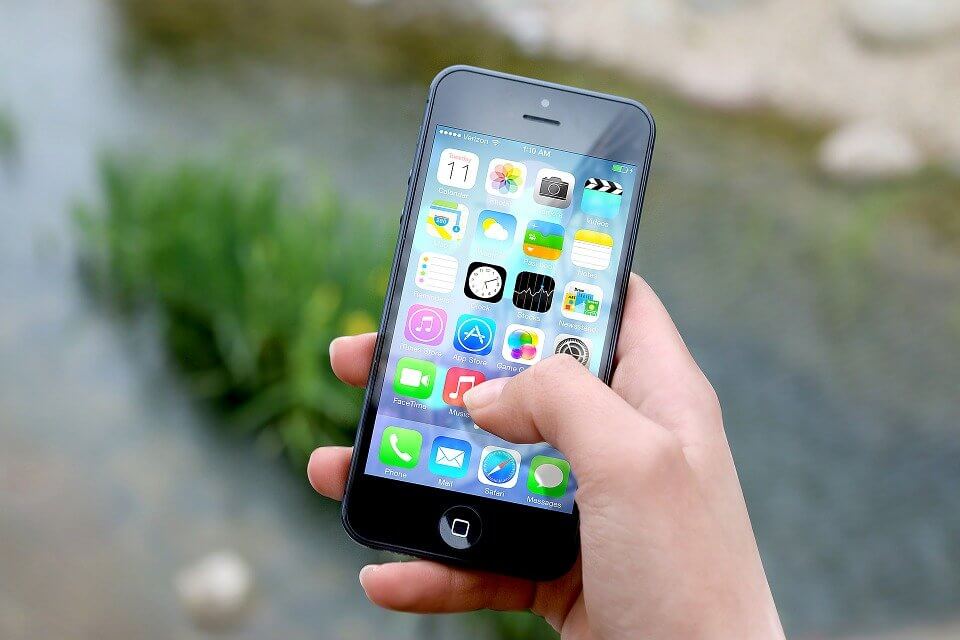
Apple Inc. develops iOS. This is the second-largest phone operating system, a closed source platform.
It is the closed source and second most popular mobile device operating system.
The Apple products—iPhone, iPod touch, iPad, and second-generation Apple TV are also running with this iOS. iOS is derived from Mac OS X. Apple’s iOS was introduced on June 29, 2007.
Since iOS has many upgrades, the latest major version is iOS 13.
Ios developers mainly concentrated on performance rather than appearance. But the iPhone did not support any third-party applications until the release of iOS 2 on July 11, 2008.
The features of IOS are as follows:
- Security: The system works so that a virus attack is wholly excluded.
- Rich shop. In terms of applications, only more than 1 million applications are available—quantitatively, iOS loses to Android in this regard, but it should be remembered that the OS is closed source. Therefore, all applications are written only by professional programmers and vary in high quality.
- A virtual assistant is an owner of an iPhone who can execute teams and even dialogue with the person.
- It is believed that the IOS interface is more user-friendly and requires a minimum amount of time for its development.
The “jailbreaking” method allows the installation of third-party applications.
No doubt, this is one of the best-operating systems in the world. iOS has been used on the iPhone 2G, iPhone 3G, 4, 4S, 5, 5S, and 5C.
Apple App Store: Apple’s App Store is the world’s largest app store, with over two million apps available for download. The App Store is available on all Apple devices, including the iPhone, iPad, iPod Touch, and Mac. Apple also offers a separate app store for developers, called the App Store for Developers. The App Store offers a wide variety of apps, including games, productivity apps, and more. There are also many apps that are only available in certain countries. Apple offers a free app of the week and occasionally offers discounts on apps.
Pros
- Camera Function
- Folder setting
- Spelling test support
- Multitasking
Cons
- Semi thread messaging
- mail does not support attachment directly
3. Graphene OS
Graphene OS is a privacy and security-focused mobile operating system based on the Android Open Source Project (AOSP). Developed by a team of privacy enthusiasts and security experts, it aims to provide users with a more secure and privacy-respecting alternative to traditional Android-based operating systems.
Graphene OS is designed to be a hardened and privacy-enhancing variant of Android, with a strong emphasis on minimizing the attack surface and protecting user data from potential threats. It achieves this by stripping away unnecessary components, implementing various security hardening measures, and introducing privacy-focused features.
Features of Graphene OS:
- Security Hardening: Graphene OS employs various security hardening techniques, such as kernel hardening, address space layout randomization (ASLR), and compiler-based mitigations against common vulnerabilities.
- Sandboxing and Isolation: The operating system utilizes sandboxing and isolation mechanisms to separate and confine applications, reducing the potential impact of compromised apps on the rest of the system.
- Privacy Enhancements: Graphene OS includes privacy-focused features like a built-in firewall, network traffic monitoring, and the ability to disable or remove potentially invasive components like Google Play Services.
- Verified Boot and Secure Updates: The operating system supports verified boot to ensure the integrity of the system during the boot process, and it provides secure over-the-air (OTA) updates to address security vulnerabilities and bugs.
- Open Source and Auditable: Being based on AOSP, Graphene OS is open-source, allowing for independent audits and community contributions to enhance its security and privacy features.
- Compatibility: While prioritizing security and privacy, Graphene OS aims to maintain compatibility with most Android applications and services, ensuring a familiar user experience.
Pros
- Enhanced security and privacy compared to traditional Android
- Open-source and auditable codebase
- Minimized attack surface and hardened against vulnerabilities
- Granular control over privacy settings and app permissions
- Regular security updates and patches
Cons
- Limited device support and compatibility (primarily focused on Pixel devices)
- Potential compatibility issues with some applications or services
- Steep learning curve for users accustomed to mainstream Android
- Limited app ecosystem compared to Google Play Store
- Ongoing maintenance and development efforts required
Graphene OS is an attractive option for users prioritizing privacy and security on their mobile devices. However, it comes with trade-offs, such as limited device support and potential compatibility issues. Despite these challenges, Graphene OS continues to gain popularity among privacy-conscious users seeking more control over their personal data and digital footprint.
4. Blackberry 10 OS

Blackberry Limited developed the Blackberry phone operating system. This is powered by Quantum system software (later renamed as QNX software systems).
The Blackberry smartphone OS is a closed source operating system like iOS and Windows OS.
Government employees mainly use this.
This is a next-generation platform for Blackberry smartphones and tablets.
There are two significant releases of BlackBerry OS from QNX software systems – Blackberry Tablet OS with Blackberry Playbook and Blackberry Tablet OS.
Pros
- Excellent connectivity
- User-friendly Qwerty keyboard
- Excellent messaging through BM, Yahoo, Gtalk, Facebook, and Whatsapp
Cons
- Poor battery life
- Poor camera quality
5. Color OS
Color OS is a highly customized Android-based operating system developed by OPPO, a leading Chinese smartphone manufacturer. It is designed to provide a unique and user-friendly experience to OPPO smartphone users.
Color OS was first introduced in 2013 and has since undergone several updates and improvements. The latest version, Color OS 13, is based on Android 13 and comes with a range of new features and enhancements. OPPO has focused on providing a clean and intuitive user interface, while also incorporating various customization options and value-added features.
Features of Color OS
- User Interface: Color OS boasts a visually appealing and user-friendly interface with a focus on simplicity and ease of use. It offers a variety of customization options, including themes, icon packs, and font styles.
- Smart Sidebar: One of the standout features of Color OS is the Smart Sidebar, which provides quick access to frequently used tools and apps, making multitasking more efficient.
- Game Space: Color OS comes with a dedicated Game Space that enhances the gaming experience by providing features like game mode, game acceleration, and game stats tracking.
- Gestures and Navigation: Color OS supports various gestures and navigation options, such as off-screen gestures, smart gestures, and customizable navigation keys, providing users with a more intuitive and efficient way to interact with their devices.
- Smart Assistant: OPPO’s AI-powered smart assistant, Breeno, is integrated into Color OS and can help users with various tasks, such as setting reminders, answering queries, and controlling smart home devices.
- System-Wide Dark Mode: Color OS offers a system-wide dark mode, which not only looks sleek but can also help reduce eye strain and improve battery life.
Pros of Color OS
- Intuitive and user-friendly interface
- Extensive customization options
- Smart features like Smart Sidebar and Game Space
- Efficient gesture and navigation controls
- AI-powered smart assistant (Breeno)
- System-wide dark mode
Cons of Colors OS
- Bloatware and pre-installed apps from OPPO
- Delayed software updates compared to stock Android
- Limited availability outside of OPPO devices
- Potential performance issues on older or low-end devices
- Lack of advanced customization options for power users
Color OS offers a feature-rich and visually appealing experience for OPPO smartphone users. While it may not be suitable for everyone, especially those who prefer a stock Android experience, Color OS has garnered a loyal following among OPPO users who appreciate its unique features and customization options.
6. Sailfish OS
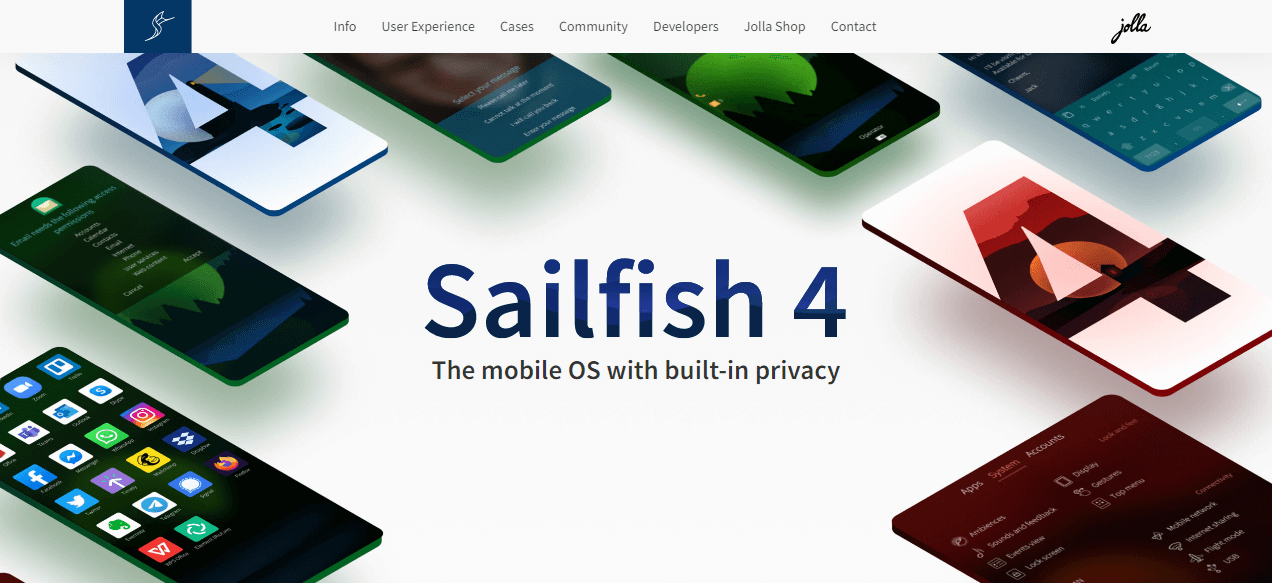
Jolla develops a sailfish phone operating system. Jolla is an independent designer and developer of mobile devices.
The Sailfish OS is one of the European alternatives, and it offers an exclusive licensing model for local customizations. Since 2013, the developers have provided the most secure platform for trusted mobile solutions with better user experiences.
After failing at Nokia in 2011 with their previous OS, “MeeGo,” they started and established a new company under the name of Jolla Ltd.
This OS is partly open-source and adopts the GPL (General Public License). Sailfish is used in the Jolla Smartphone and the upcoming Jolla Tablets. The Linux kernel develops the OS, including a multitasking graphical shell (lipstick).
The Sailfish OS is available for Sony Xperia mobile phones and the Gemini PDA.
Features of SailFish OS:
- It has an efficient user interface designed with an interactive gesture-based interface.
- It offers a regional licensing model by providing complete OS upgrades.
- It supports all Android apps and Ubuntu apps. So you can download any app from the Google Play Store or Sailfish Store.
7. PostmarketOS
postmarketOS is a Linux-based operating system designed specifically for mobile devices, such as smartphones and tablets. It aims to provide a modern and sustainable alternative to traditional mobile operating systems while emphasizing openness, privacy, and security.
postmarketOS is built on top of the Alpine Linux distribution and utilizes various open-source projects and components. It is a community-driven initiative that focuses on delivering a lightweight and efficient operating system that can breathe new life into older or unsupported mobile devices.
Visit PostmarketOS official page
Features
- Open-Source and Libre: postmarketOS is entirely open-source and libre, adhering to the principles of free and open-source software (FOSS). This ensures transparency, community involvement, and freedom from proprietary components.
- Security and Privacy: With a focus on security and privacy, postmarketOS aims to provide a more secure and privacy-respecting alternative to traditional mobile operating systems. It avoids closed-source components and potentially invasive features.
- Lightweight and Efficient: By leveraging Alpine Linux and optimizing for mobile devices, postmarketOS strives to be lightweight and efficient, enabling it to run smoothly on older or lower-end hardware.
- Device Support: The project actively works on supporting a wide range of mobile devices, allowing users to extend the lifespan of their devices and reduce electronic waste.
- Convergence: postmarketOS embraces the concept of convergence, enabling users to use their mobile devices as traditional desktop computers by connecting external peripherals like keyboards, mice, and displays.
- Customization and Modularity: With a modular design and a package-based system, postmarketOS allows users to customize and tailor the operating system to their specific needs and preferences.
Pros
- Open-source and libre philosophy
- Enhanced security and privacy
- Lightweight and efficient for older or lower-end devices
- Extended device support and reduced electronic waste
- Convergence capabilities for desktop-like experience
- Highly customizable and modular
Cons
- Limited app ecosystem compared to mainstream mobile operating systems
- Potential compatibility issues with certain applications or services
- Steep learning curve for users accustomed to traditional mobile operating systems
- Ongoing development efforts required to support new devices and features
- Limited hardware acceleration and performance on some devices
postmarketOS is an intriguing project that aims to provide a viable and sustainable alternative to traditional mobile operating systems. While it may not be suitable for all users, it appeals to those who value openness, privacy, and extending the lifespan of their mobile devices. However, it also comes with trade-offs, such as a limited app ecosystem and potential compatibility issues, which users should consider before adopting it as their primary mobile operating system.
8. Ubuntu Touch: – Best OS for mobile

Ubuntu Touch is a mobile operating system developed by Canonical, the company behind the popular Ubuntu Linux distribution. It is designed to provide a unified experience across various form factors, including smartphones, tablets, and potentially even desktop computers.
Visit Ubuntu Touch official page
Ubuntu Touch was first announced in 2013 as a part of Canonical’s convergence vision, aiming to bring the familiar Ubuntu experience to mobile devices while leveraging the power of open-source software and the Linux kernel. It is based on the Ubuntu Linux distribution and uses various open-source components and technologies.
Features of Ubuntu Touch
- Convergence: One of the key features of Ubuntu Touch is its focus on convergence, which allows users to seamlessly transition between different form factors and use cases. This means that a single Ubuntu Touch device can function as a smartphone, a tablet, or even a desktop computer when connected to external peripherals.
- Scopes: Ubuntu Touch introduces the concept of “Scopes,” which are dynamic and customizable home screen interfaces that provide contextual search and information aggregation from various sources, such as applications, online services, and local data.
- Native Apps and Web Apps: Ubuntu Touch supports both native applications developed using Ubuntu’s SDK and web applications built using HTML5, CSS, and JavaScript, allowing developers to leverage their existing web development skills.
- Open-Source and Privacy: Being based on open-source software, Ubuntu Touch promotes transparency, community involvement, and user privacy. It avoids proprietary components and closed-source software, ensuring users have full control over their data and devices.
- Customization and Flexibility: Ubuntu Touch offers a high degree of customization and flexibility, allowing users to tailor the operating system to their specific needs and preferences. This includes the ability to install alternative user interfaces, themes, and applications.
- Security Updates: Canonical provides regular security updates and patches for Ubuntu Touch, ensuring that devices remain up-to-date and protected against known vulnerabilities.
Pros
- Convergence capabilities for a unified experience across devices
- Open-source and privacy-focused
- Flexibility and customization options
- Support for native and web applications
- Regular security updates and patches
Cons
- Limited app ecosystem and developer support compared to mainstream mobile operating systems
- Potential compatibility issues with certain applications or services
- Limited hardware support and device choices
- Steep learning curve for users accustomed to traditional mobile operating systems
- Uncertainty around the project’s future and long-term support
While Ubuntu Touch offers an innovative approach to mobile computing with its convergence capabilities and open-source philosophy, it has faced challenges in gaining widespread adoption and maintaining a robust app ecosystem. Despite its potential, the project’s future remains uncertain, and users should consider the limited hardware support and app availability before adopting Ubuntu Touch as their primary mobile operating system.
9. KaiOS
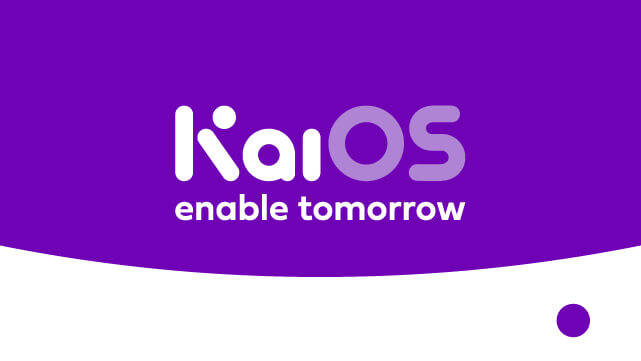
KaiOS is a web-based operating system designed specifically for feature phones and entry-level smartphones. Developed by KaiOS Technologies, it aims to bridge the gap between basic feature phones and more advanced smartphones, providing a modern and intuitive user experience while maintaining affordability and simplicity.
KaiOS was first introduced in 2017 and has since gained traction as a popular choice for feature phone manufacturers and mobile network operators, particularly in emerging markets. It leverages web technologies, such as HTML5, CSS, and JavaScript, allowing developers to create applications that can run on devices with limited hardware resources.
Features of KaiOS
- Web-Based Platform: KaiOS is built on web technologies, enabling developers to create applications using familiar web development languages and tools. This lowers the barrier to entry for app development and fosters a growing ecosystem of apps and services.
- Lightweight and Efficient: KaiOS is designed to be lightweight and efficient, making it suitable for low-cost devices with limited hardware resources. It optimizes performance and battery life, ensuring a smooth user experience on entry-level hardware.
- Intuitive User Interface: KaiOS provides a modern and user-friendly interface, featuring a home screen with app icons, a notification center, and support for gestures and voice commands. This makes it accessible to users who are transitioning from feature phones to smartphones.
- Connectivity and Online Services: Despite its lightweight nature, KaiOS supports basic online services and connectivity features, such as Wi-Fi, GPS, and mobile data. Users can access the internet, social media platforms, and messaging applications, among other services.
- Security and Privacy: KaiOS prioritizes security and privacy, with regular security updates and a focus on minimizing data collection and user tracking.
- Ecosystem and Partnerships: KaiOS has established partnerships with major mobile network operators and device manufacturers, enabling a growing ecosystem of KaiOS-powered devices and applications.
Pros
- Affordable and accessible for entry-level devices
- Intuitive and user-friendly interface
- Web-based platform for easy app development
- Lightweight and efficient, optimized for low-cost hardware
- Growing ecosystem and support from partnerships
Cons
- Limited hardware capabilities compared to mainstream smartphones
- Potential app compatibility issues due to the web-based nature
- Restricted functionality and features compared to more advanced operating systems
- Limited app ecosystem and developer support compared to mainstream mobile platforms
- Potential security and privacy concerns due to web-based architecture
KaiOS has carved out a niche in the mobile operating system market by catering to the needs of users in emerging markets and those seeking affordable and accessible devices. While it may not match the capabilities of mainstream smartphone operating systems, KaiOS offers a compelling solution for feature phone users looking to upgrade to a more modern and connected experience without the high costs associated with advanced smartphones.
10. Harmony OS – Latest mobile operating system
Harmony OS, developed by Huawei, is an operating system designed to provide a unified and seamless experience across multiple devices. Introduced as an Android alternative, Harmony OS offers a versatile platform for smartphones, tablets, wearables, smart TVs, and other connected devices.
Harmony OS, also known as Hongmeng OS in China, was unveiled by Huawei in 2019. It was developed in response to the challenges posed by the US trade ban, which restricted Huawei’s access to Google’s Android operating system and related services. Harmony OS is an open-source, microkernel-based operating system emphasizing cross-device compatibility, security, and consistent user experience.
Features:
- Cross-Platform Capability: Harmony OS is designed to work seamlessly across various devices, including smartphones, tablets, smartwatches, smart TVs, and more. It enables developers to create apps easily adapted to different screen sizes and form factors, providing users with a consistent experience across their devices.
- Distributed Architecture: One of the key features of Harmony OS is its distributed architecture. Multiple devices can form a virtual super device, allowing them to share resources and capabilities. For example, users can leverage the processing power of their smartphones to enhance the performance of other connected devices in real time.
- Enhanced Security: Harmony OS prioritizes security using a microkernel architecture, isolating different system components and services. This approach minimizes the potential impact of a security breach, as vulnerabilities in one part of the system are less likely to affect the entire system.
- Deterministic Latency Engine: Harmony OS uses a deterministic latency engine that enables precise task scheduling and resource allocation. This results in improved system performance and responsiveness, even during high-demand scenarios.
Pros:
- Device Compatibility: Harmony OS offers a unified platform that can be deployed across various devices. This compatibility allows developers to create apps and services seamlessly transitioning between different devices, offering users a cohesive experience.
- Enhanced Performance: The distributed architecture and deterministic latency engine of Harmony OS contribute to improved performance and responsiveness. The system optimizes resource allocation and scheduling, leading to smoother multitasking and reduced latency.
- Security Focus: Harmony OS aims to provide enhanced security with its microkernel architecture and isolated components. By minimizing the impact of potential security breaches, the system aims to protect user data and ensure the integrity of the overall system.
Cons:
- App Ecosystem: One of the challenges Harmony OS faces is the need for a well-established app ecosystem. While it supports Android apps through a compatibility layer, the availability of native Harmony OS apps is still limited compared to established platforms like Android or iOS.
- Market Adoption: Harmony OS is relatively new, and its market adoption outside China is still limited. Gaining traction in the global market will require Huawei to build partnerships with other device manufacturers and encourage developers to create apps specifically for Harmony OS.
- User Familiarity: Shifting to a new operating system requires users to adapt to a different interface and user experience. Users accustomed to other operating systems may find it challenging to switch to Harmony OS initially.
Harmony OS aims to provide a versatile and secure operating system for various devices. With its focus on cross-platform compatibility, enhanced performance, and security, Harmony OS has the potential to become a competitive player in the operating system landscape. However, it still faces challenges related to app availability and market adoption.
What is the best mobile operating system and why?
As an AI language model, I am designed to maintain a neutral stance without any personal opinions. Therefore, it would be inappropriate for me to declare any mobile operating system as the “best.” However, there are several factors that most users consider before choosing their preference.
Android and iOS are the two leading mobile operating systems in the market, each having its own set of advantages and disadvantages. While Android has a larger market share and offers greater customization options, iOS is renowned for its security and seamless performance across all Apple devices.
Ultimately, the choice depends on individual preferences based on these factors along with user interface design, available applications, hardware compatibility, updates frequency, and brand trustworthiness.
A professional tone dictates that one should carry out thorough research, weigh up personal requirements against what each platform offers before making an informed decision about which mobile operating system to employ.
Choosing the best os for phones involves evaluating factors like user-friendliness, app ecosystem, security, and hardware compatibility.
For those seeking the best operating system for Android phones, it’s worth exploring the features and optimizations offered by various contenders, such as Bliss OS, known for its customization options and performance enhancements.
Frequently Asked Questions (FAQs)
What is the difference between iOS and Android?
iOS is a closed-source operating system developed by Apple, designed exclusively for Apple devices like iPhones and iPads. Android, on the other hand, is an open-source operating system developed by Google and used by various smartphone manufacturers, offering more hardware choices and customization options.
How often do mobile operating systems receive updates?
The frequency of updates varies between different operating systems and manufacturers. Apple typically releases major iOS updates annually, with smaller updates throughout the year. Google releases new Android versions annually, but the rollout to individual devices depends on the manufacturer and carrier. Other operating systems like KaiOS and postmarketOS have their own update schedules.
What is the purpose of a mobile operating system?
A mobile operating system is the software that manages the hardware and software resources of a mobile device, such as a smartphone or tablet. It provides a user interface, manages applications, handles memory and storage, and controls various device components like the camera, display, and sensors.
Can I install a different mobile operating system on my device?
In most cases, it is not possible or recommended to install a different mobile operating system on a device that did not originally ship with that OS. However, some devices, particularly those with unlocked bootloaders or supported by custom ROM communities, may allow for alternative operating system installations. This process can be complex and may void the device’s warranty.
What are the most important factors to consider when choosing a mobile operating system?
When selecting a mobile operating system, some important factors to consider include the app ecosystem and app availability, user interface and ease of use, security and privacy features, hardware compatibility and device choices, update frequency and long-term support, and integration with other devices or services you may be using.
Is DOS a mobile operating system?
Yes. DOS was originally designed for personal computers, but it became a popular mobile operating system starting in the early 1990s. DOS was originally designed as a mobile operating system and remains popular on mobile devices.
What is the most popular mobile OS?
There is no definitive answer to this question, as the most popular mobile operating system is constantly changing. However, some commonly cited contenders for the title include Android, iOS, and Windows Phone.
What OS does Nokia use?
Nokia’s devices usually run on the Windows Phone OS. However, some recent Nokia devices have been released with Android OS.
Final words
Choosing the Operating System for Mobile ultimately depends on individual preferences, needs, and priorities. While there is no one-size-fits-all solution, certain operating systems stand out in different areas, making them suitable for specific use cases and user groups.
For an immersive gaming experience on mobile, the android os for gaming is a popular choice, thanks to its powerful hardware and extensive game library.
When it comes to the best operating system for android phones, users often consider factors such as performance, customization options, and software updates.
Mobile operating systems, including Apple iOS, Android, and Windows, are trending along with mobile communications in 2025.
- How to download Instagram videos, reels, or photos to my PC?
- Andy Android Emulator: Best emulator tool for Windows and Mac
- How Does Robotic Process Automation Differ from Intelligent Automation?
- How to install Google Chrome OS Flex on an old laptop or computer?
- How to Download YouTube Videos on both Smartphone and Computer?
We cannot say this is the best mobile OS globally because the mobile operating system’s ranking systems are sometimes typical.
- For those deeply invested in Apple’s ecosystem and prioritizing seamless integration with other Apple devices and services, iOS remains a compelling choice. Its user-friendly interface, robust security features, and access to a vast and curated app store make it a popular option for many users.
- Android, on the other hand, offers unmatched flexibility, customization options, and a vast selection of devices across various price points. Its open-source nature and extensive app ecosystem make it an attractive choice for users who value choice and versatility.
- For users seeking enhanced privacy and security, privacy-focused operating systems like Graphene OS and postmarketOS provide hardened and open-source alternatives to mainstream options, albeit with potential trade-offs in terms of app availability and compatibility.
- KaiOS has carved a niche by bringing modern connectivity and web-based applications to entry-level devices, making it a viable option for users in emerging markets or those seeking affordable and accessible mobile computing.
- Bliss os is an open-source Android-based operating system known for its customization options and privacy-focused features.
- Color OS is a highly customized Android-based operating system developed by OPPO, offering a unique and user-friendly experience.
But we can tell which is the best operating system globally based on the popularity and number of users.
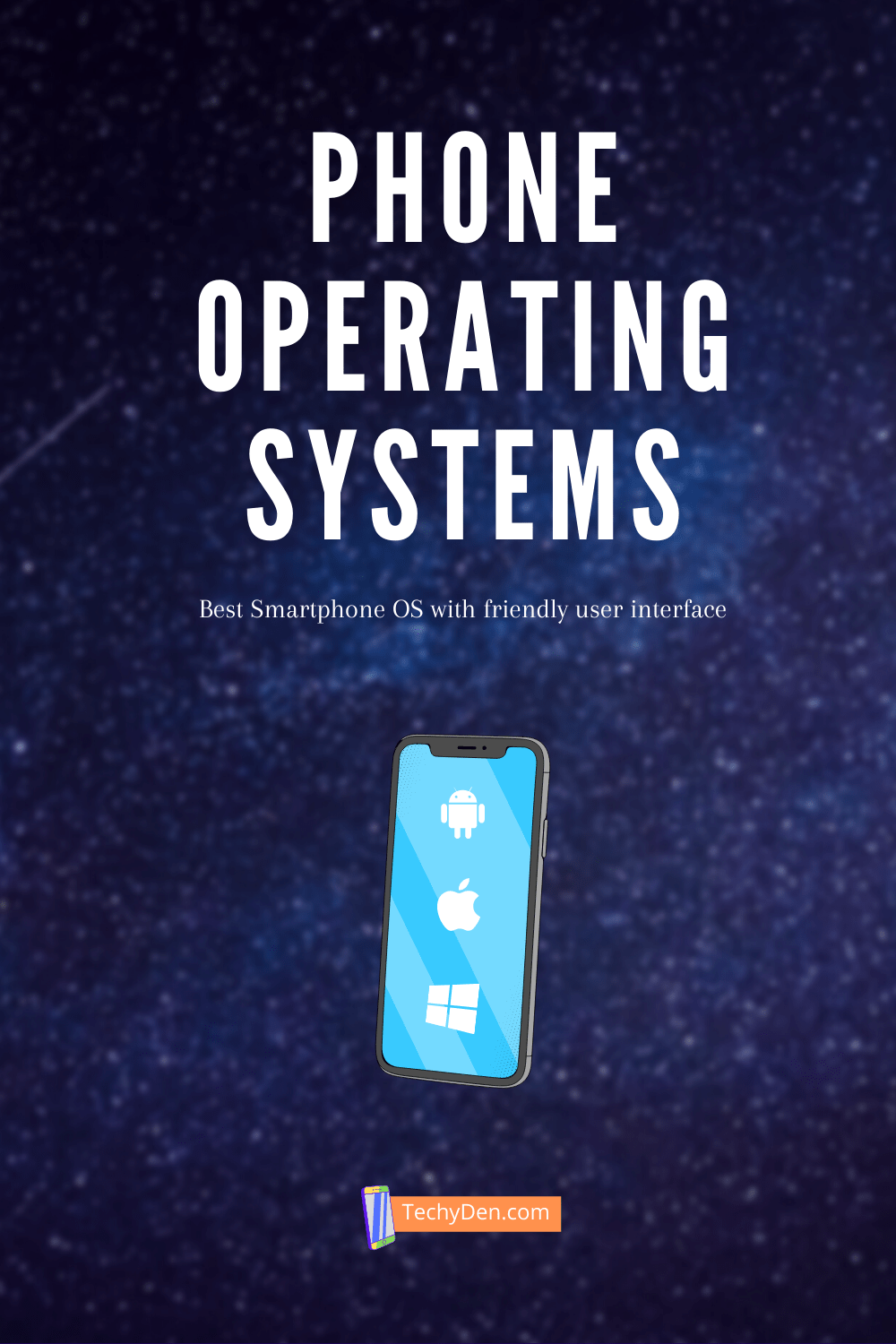
Android is the most popular mobile operating system and the second-biggest tech company among the most popular mobile operating systems.
The debate over the best operating system phone often revolves around personal preferences, brand loyalties, and specific feature requirements.
Ultimately, the best mobile operating system is the one that aligns with your specific needs, budget, and priorities. Whether you value ease of use, app selection, privacy, or affordability, the diverse landscape of mobile operating systems offers options to cater to various preferences and requirements.
As technology continues to evolve, it will be interesting to observe how existing mobile operating systems adapt and innovate, while also keeping an eye out for potential disruptors that may reshape the landscape in the years to come.


